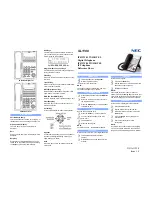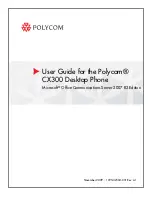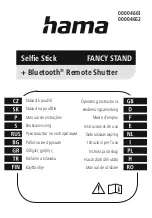
50
phone mode or in front of the face in the two-way radio mode, keep the device at
least 2.5 centimeters (1 inch) from your body when transmitting.
•
Using accessories not supplied or approved by Motorola may cause your mobile
device to exceed RF energy exposure guidelines. For a list of Motorola-supplied
or approved accessories, visit our Web site at:
www.motorola.com
.
Two-Way Radio Operation
Your radio product has been designed and tested to comply with national and
international standards and guidelines regarding human exposure to RF
electromagnetic energy, when operated in the two-way mode (at the face, or at the
abdomen when using an audio accessory) at usage factors of up to 50% talk/50%
listen.
Transmit no more than the rated duty factor of 50% of the time. To transmit (talk),
push the PTT button. To receive calls, release the PTT button. Transmitting 50% of
the time or less, is important because this radio generates measurable RF energy
only when transmitting (in terms of measuring for standards
compliance).
When using your radio product as a traditional two-way radio,
hold the radio product in a vertical position with the
microphone 2.5 to 5 centimeters (1 to 2 inches) away from
the lips
.
RF Energy Interference/Compatibility
Nearly every electronic device is subject to RF energy interference from external
sources if inadequately shielded, designed, or otherwise configured for RF energy
compatibility. In some circumstances, your mobile device may cause interference
with other devices.
Follow Instructions to Avoid Interference Problems
Turn off your mobile device in any location where posted notices instruct you to do
so.
In an aircraft, turn off your mobile device whenever instructed to do so by airline
staff. If your mobile device offers an airplane mode or similar feature, consult airline
staff about using it in flight.
Implantable Medical Devices
If you have an implantable medical device, such as a pacemaker or defibrillator,
consult your physician before using this mobile device.
Persons with implantable medical devices should observe the following precautions:
•
ALWAYS keep the mobile device more than 20 centimeters (8 inches) from the
implantable medical device when the mobile device is turned ON.
•
DO NOT carry the mobile device in the breast pocket.
•
Use the ear opposite the implantable medical device to minimize the potential
for interference.
•
Turn OFF the mobile device immediately if you have any reason to suspect that
interference is taking place.
Read and follow the directions from the manufacturer of your implantable medical
device. If you have any questions about using your mobile device with your
implantable medical device, consult your healthcare provider.
Portable Radio Product Operation and
EME Exposure
Your Motorola radio product is designed to comply with the following national and
international standards and guidelines regarding exposure of human beings to radio
frequency electromagnetic energy (EME):
•
United States Federal Communications Commission, Code of Federal
Regulations; 47 CFR part 2 sub-part J.
•
American National Standards Institute (ANSI) / Institute of Electrical and
Electronics Engineers (IEEE). C95. 1-1992.
•
Institute of Electrical and Electronics Engineers (IEEE). C95. 1-2005 Edition.
•
International Commission on Non-Ionizing Radiation Protection (ICNIRP) 1998.
•
Ministry of Health (Canada). Safety Code 6. Limits of Human Exposure to Radio
frequency Electromagnetic Fields in the Frequency Range from 3 kHz to 300 GHz,
1999.
•
Australian Communications Authority Radio communications (Electromagnetic
Radiation - Human Exposure) Standard 2003.
•
ANATEL, Brazil Regulatory Authority, Resolution 303 (July 2, 2002) “Regulation of
the limitation of exposure to electrical, magnetic, and electromagnetic fields in













































